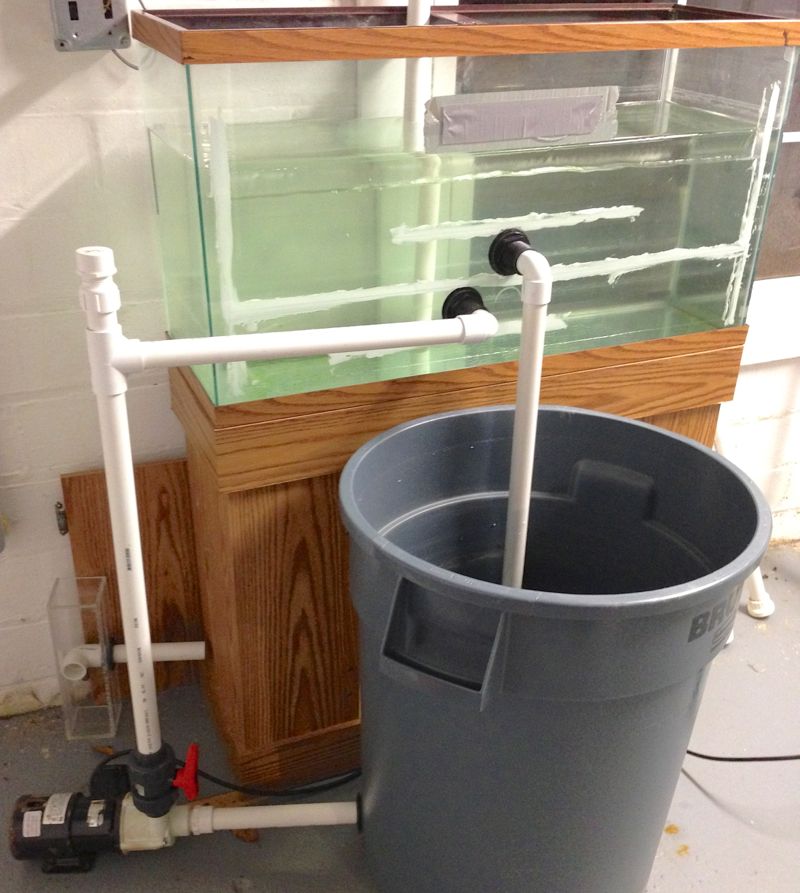picker
New member
> you say the holes, ideally, would be completely submerged,
> but others suggest that the water will reach a height of only mid-circle
The one that is more submerged, utilizing its fully wetted area should have the slowest and calmest flow. Why would one what to limit the water's use of the given area? More smaller holes totaling the same area would be easier to submerge and the weight of the water above should inhibit bubble formation. (hole idea to reduce noise)
> concerns that a 1" depth (front to back) is not sufficient for an internal-overflow box,
The flow rate inside a larger box should be slower but here is a 1" c2c with bulkhead in a "test" herbie configuration able to flow 1000gph side to side, but does have some bubbles from the fall. [6.8Gig movie]

> but others suggest that the water will reach a height of only mid-circle
The one that is more submerged, utilizing its fully wetted area should have the slowest and calmest flow. Why would one what to limit the water's use of the given area? More smaller holes totaling the same area would be easier to submerge and the weight of the water above should inhibit bubble formation. (hole idea to reduce noise)
> concerns that a 1" depth (front to back) is not sufficient for an internal-overflow box,
The flow rate inside a larger box should be slower but here is a 1" c2c with bulkhead in a "test" herbie configuration able to flow 1000gph side to side, but does have some bubbles from the fall. [6.8Gig movie]

Last edited:
